Discover the top 5 go-to-market tactics every startup needs to win in 2025. From audience targeting to sales channels, build a strategy for sustainable growth.
The world of startups is very fast-paced, and a brilliant product is not everything. The action that is difficult is to introduce this product into the market efficiently, effectively and at scale. That is where a powerful Go-to-Market (GTM) strategy should be applied. A GTM approach provides the steps of engaging the customers, value creation, and competitive advantage that a company will undergo. An efficient GTM strategy is particularly important in the case of tech startups, as its tools and logic determine whether a company scales quickly or ends up being remembered only when someone mentions launches.
In this article, we unravel the top 5 Go-to-Market tactics every startup ought to use and highlight the way to develop a GTM strategy that works.
Table of Contents
1. Understanding Go-to-Market Strategy
2. Why Startups Need a GTM Plan
3. Top 5 Go-to-Market Tactics for Startups
3.1. Customer Persona + ICP-Driven Targeting
3.2. Product-Led Growth (PLG) Strategy
3.3. Multi-Channel Launch with Content-Led Demand Gen
4. Strategic Partnerships and Ecosystem Hacking
5. Sales-Led + ABM for B2B Startups
6. How to Build a GTM Plan
6.1. Define Your Target Market & Personas
6.2. Craft Your Value Proposition
6.3. Choose Your Sales & Distribution Channels
6.4. Align Marketing & Sales
6.5. Set GTM Metrics
7. Common GTM Mistakes Startups Make
Conclusion
1. Understanding Go-to-Market Strategy
Go-to-Market strategy refers to a comprehensive plan describing the way of inserting a product or service by a firm into the market. These are vital factors in it, including market segmentation, specifications of the target audience, distribution channels, messages, sales strategy and price models. Unlike the general business plan, the GTM strategy is all about how to reach customers and how to realize the product usage.
When it comes to startups, and particularly tech companies, a GTM strategy guarantees that their tight resources are utilized effectively and allows a company to shorten time to value. It will also assist in testing the assumptions on what customers need and determine where to place your product among other benefits it offers. Even the most innovative products can easily fail in case of the absence of a powerful GTM strategy, including being poorly timed, targeted at the wrong people, or featuring weak messages.
2. Why Startups Need a GTM Plan
Most startups fail not because of poor products, but because they have not been able to fit their product with the best audience at the opportune time. The GTM plan serves as a guideline that encourages a founder to determine market fit, set priorities based on the most promising customer cohorts and scale cost-effectively.
By doing GTM early startups will have better control over their Customer Acquisition Cost (CAC) and thereby are in a position to make better revenue projections while at the same time getting the opportunity to iterate rapidly in response to real customer feedback. This is more so in the case where there is less runway and high investor expectations. A properly developed GTM plan can enable startups to decode a competitive ecosystem, emerge through the noise, and create traction much faster.
3. Top 5 Go-to-Market Tactics for Startups
Here’s a closer look at the top GTM tactics you can apply to position your startup for success:
3.1. Customer Persona + ICP-Driven Targeting
A simple but important first step in creating a go-to-market plan for a new business would be to define your Ideal Customer Profile (ICP) and buyer personas in a clear way that you are clear about what and who you could sell to. An ICP is the kind of company/individual who would gain the most out of what you are selling, i.e., the person most likely to convert, retain, and evangelize your solution.
TAM (Total Addressable Market), SAM (Serviceable Available Market), and SOM (Serviceable Obtainable Market) models allow startups to find the most appropriate entry point in their market. In-depth qualitative and quantitative research assists in developing comprehensive personalities that are used to structure marketing campaigns and sales scripts. Tech startups can utilize enrichment tools such as Clearbit or Apollo which can be used to target more specifically resulting in an increase in the rate of responses and a deeper engagement.
3.2. Product-Led Growth (PLG) Strategy
A Product-Led Growth strategy is when you allow your product to talk. Instead of focusing only on sales reps, startups allow onboarding by letting users learn to realize value via freemium business models, self-serve, and in-app suggestions. Such a technique brings in organic adoption and virality at the grass-root level.
It is evident that tech giants such as Slack, Notion, and Dropbox proved that when your product addresses a real issue and provides an enjoyable user experience, it could be your best salesperson. To make PLG succeed, you have to have frictionless onboarding, your support mechanisms have to be in the app, and the value should be clear as soon as possible. Success will be defined by such metrics as Product Qualified Leads (PQLs), the rate of usage, and retention lines. And mix this with community-driven growth and feedback loops and you have an engine of scale.
3.3. Multi-Channel Launch with Content-Led Demand Gen
To start a startup in 2025 is to think beyond a press release. The most effective go-to-market plans used today utilize numerous digital points, such as blogs, email, social media, video and communities to create buzz and create demand. The first step should be the generation of search-engine optimized landing pages, how-to instructions, and cases that inform and sell.
Increase awareness on websites such as Product Hunt, Hacker news, Reddit, and LinkedIn. Use paid campaigns on Google Ads or Meta in combination with organic to conduct a full-funnel campaign. Proper launch campaigns promoted by email marketing, interactions with influencers, and the early access will provide a serious additional boost. Webflow, HubSpot, and Buffer are a few tools that streamline campaign work and simplify it in lean teams.
4. Strategic Partnerships and Ecosystem Hacking
Tapping established ecosystems is one of the best go-to-market strategies tech startups can use. You can achieve this by joining the platforms, communities, and marketplaces that already have your audience, thus gaining trust and boosting growth without incinerating money. For example, a B2B SaaS tool can utilize integrations with Slack, Zoom, or Salesforce on their marketplaces. Become a member of startup accelerators or venture networks that offer co-marketing opportunities. White-label partnerships or reseller agreements that distribute you further are worth considering. Such relationships will also assist in acquiring customers and improve credibility as well as minimize friction in the buyer experience.
5. Sales-Led + ABM for B2B Startups
Not every product can develop around a PLG model. With high-ticket, or enterprise-based, technological startups, the most appropriate choice is the Sales-Led GTM strategy with the help of Account-Based Marketing (ABM). This will involve the development of a specialised sales force that will work on specific accounts sending them personalised messaging and solutions.
ABM is an integrated approach that uses content, emails, advertisements and outbound selling strategies to interest decision makers at prospective companies. This model will only be successful when marketing and sales teams are tightly aligned, metrics (such as pipeline velocity and deal size) are shared between these departments and the CRM system is integrated. ABM campaigns can be managed using such platforms as Demandbase, Outreach, and Salesforce. The strategy is particularly helpful when a startup sells complicated or customizable solutions where the relationship-building process implies a great deal of trust.
6. How to Build a GTM Plan
Here’s a five-step framework to build a go-to-market plan for your new business:
6.1. Define Your Target Market & Personas
The first place to start is the customer you benefit most. Conduct firmographic, demographic as well as behavior and pain points research on your ideal consumers. Develop data-based buyer personas and segment buyers based on the TAM, SAM, and SOM information. Avoid assumptions, interview customers, survey them, and study analytics to support needs and preferences before going to market.
6.2. Craft Your Value Proposition
An attractive value proposition tells you why the customer should adopt your product instead of the competitors. Use product’s main values, appeals and features. Write in clear language that does not contain jargon that will not suit your audience. Conduct experiments by testing what messaging works with actual users to close in on more persuasive messaging. It has to have a robust value proposition that would convert in all channels.
6.3. Choose Your Sales & Distribution Channels
Choose how you will distribute your product to your clients. One can sell through direct selling, online, reseller, or to a strategic partner. Align your sales model, self-serve, inside sales, or enterprise to customer expectations. Select the channels according to your target persona’s buying background so that efficiency and reach are maximized. Be prepared to pilot and tune the channels.
6.4. Align Marketing & Sales
Make sure that your marketing and salespeople are playing out of the same playbook. Increase defined objectives, e.g., conversion of qualified leads or customer acquisition. Apply the same messages throughout the funnel and develop a feedback loop between the two teams. Alignment enables the handoff to go much easier, the sales cycle to go quicker, and the customer experience to be; during the journey.
6.5. Set GTM Metrics
Put in place specific indicators to monitor the performance of GTM. The most important ones are Customer Acquisition Cost (CAC), Customer Lifetime Value (CLTV), Monthly Recurring Revenue (MRR), churn rate, and Product Qualified Leads (PQLs). Select the metrics that fit your stage of growth and GTM model. Periodically analyze to strategize to make good strategic decisions.
7. Common GTM Mistakes Startups Make
Ideally, the shortcut of the missteps in GTM can eliminate months spent in vain. Some of the false doctrines are chasing a wide audience rather than a narrow niche, expanding marketing before discovering product-market fit, and overemphasis on vanity metrics, such as impressions, instead of KPIs linked to revenues. Poor retention and mismatched messaging are also caused by the inability of many startups to integrate continuous feedback. The best thing is to experiment big, to learn quickly, and to update your GTM playbook as you scale.
Conclusion
Starting up does not only involve creating a great product, but also developing a way of linking the product to the correct persons, at the correct time, and via the correct means. An effective Go-to-Market plan means you are not simply making noise, but rather momentum is gaining. All the options may be strategic partnerships, content-led demand generation, and even ABM and PLG, but the aim is the same: sustainable, scalable growth. Are you prepared to start up in a smart way? Implement one of these best 5 GTM strategies today.
Visit Our SalesMarkBlog Section to Uncover the Sales Strategies That Ignite Your Sales Journey!





